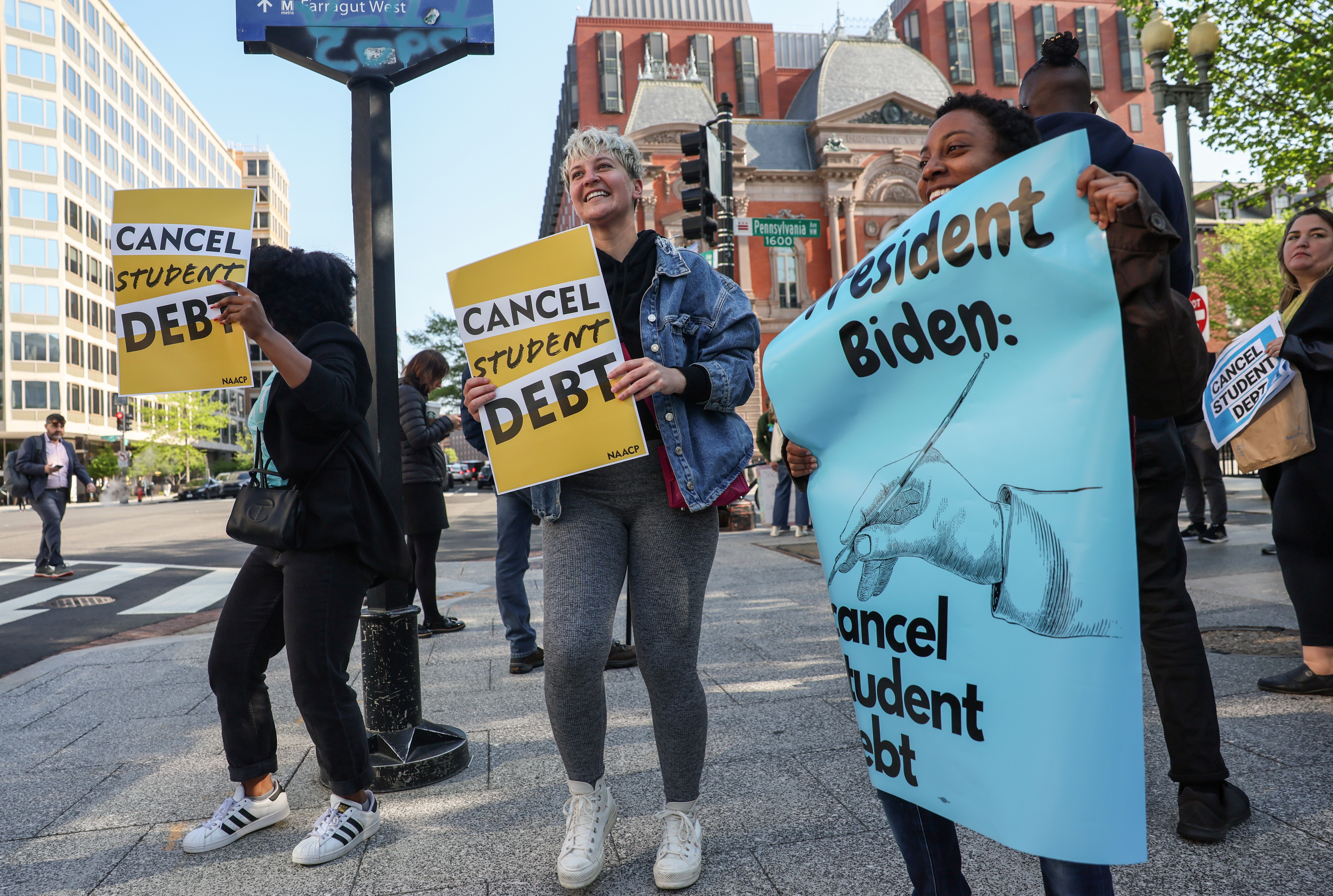
US President Joe Biden has announced his government will forgive at least $10,000 in student loans for many debt-laden university graduates in the United States, in a move that progressive activists and lawmakers welcomed but said does not go far enough.
In a tweet on Wednesday morning, Biden said students who received federal Pell Grants for lower-income families would get $20,000 in debt forgiveness, while those who did not would get $10,000. The relief only applies to those earning less than $125,000 annually, he said.
“Both of these targeted actions are for families that need it the most, working- and middle-class people hit especially hard during the pandemic,” Biden said during a news conference at the White House later in the day.
He said his administration, which also extended a freeze on student loan repayments through the end of the year, hopes to “provide more breathing room for people” burdened by their debt. “When this happens, the whole economy is better off,” Biden told reporters.
The forgiveness could impact 8 million borrowers automatically, the Department of Education said, while others would need to apply.
In keeping with my campaign promise, my Administration is announcing a plan to give working and middle class families breathing room as they prepare to resume federal student loan payments in January 2023.
I'll have more details this afternoon. pic.twitter.com/kuZNqoMe4I
— President Biden (@POTUS) August 24, 2022
Members of Biden’s own Democratic Party have pushed him to forgive as much as $50,000 per borrower, arguing that the debt makes it impossible for younger Americans to save for down payments on a home or other big consumer purchases.
Republicans have argued the move will disproportionately help people earning higher incomes.
“President Biden’s student loan socialism is a slap in the face to every family who sacrificed to save for college, every graduate who paid their debt, and every American who chose a certain career path or volunteered to serve in our Armed Forces in order to avoid taking on debt. This policy is astonishingly unfair,” Senate Minority leader Mitch McConnell said on Wednesday.
But the White House said in a statement that “skyrocketing cumulative federal student loan debt—$1.6 trillion and rising for more than 45 million borrowers—is a significant burden on America’s middle class”, and is even more crushing for vulnerable Americans.
“The student debt burden also falls disproportionately on Black borrowers. Twenty years after first enrolling in school, the typical Black borrower who started college in the 1995-96 school year still owed 95% of their original student debt,” the statement said.
Most of the student loan debt in the US is held by the federal government, the result of private and state-backed university tuition fees that are substantially higher than in most other countries.
Tuition fees to attend US universities have also surged over the past decades, with the average annual cost at a public 4-year college now 37 times higher than it was in 1963, according to the Education Data Initiative research group.
Amid a nationwide campaign to forgive student debt, Biden campaigned on a promise to immediately cancel “a minimum of $10,000 of student debt per person”.
But his administration had only extended the pause on student loan repayments put in place during the COVID-19 pandemic. On Wednesday, Biden said those repayments would start up again in January 2023.
“Today is a great day for the millions of Americans who have been drowning in student loan debt,” said Democratic Congressman Tony Cardenas, a member of the Congressional Hispanic Caucus who lobbied Biden for debt forgiveness. “Now, countless individuals, many Latinos, will soon get some relief needed to help make their dreams more accessible and affordable.”
Natalia Abrams, president and founder of the Student Debt Crisis Center, said in a statement that the Biden administration’s move “marks a historic moment and critical first step in the long fight to end the student debt crisis”.
“While this announcement is a major win for many, it is important to stress that $10,000 will leave many others still crushed by debt and important details will determine who has access to much-needed relief,” Abrams added.
That was echoed by other progressive groups in the US, who pointed out that Black students, in particular, hold disproportionately more debt than others.
Canceling $10,000 in student debt when the average white borrower is $12,000 in debt, while Black women hold on average over $52,000 isn’t just unacceptable, it’s structural racism.
— Nina Turner (@ninaturner) August 23, 2022
“Canceling $10,000 of student debt after ‘considering’ it for more than a year and a half is like waiting on hold for 6 hours only to get a 5% refund,” the National Association for the Advancement of Colored People (NAACP) advocacy group said on Twitter.
“Canceling $10,000 in student debt when the average white borrower is $12,000 in debt, while Black women hold on average over $52,000 isn’t just unacceptable, it’s structural racism,” said progressive activist and former Ohio state senator Nina Turner.
Others questioned why businesses received much more debt forgiveness than students.
“If we could afford to cancel hundreds of billions in [Paycheck Protection Program] loans to business owners in their time of need, please do not tell me we can’t afford to cancel all student debt for 45 million Americans,” Senator Bernie Sanders tweeted.







